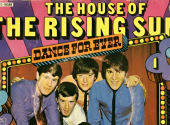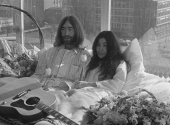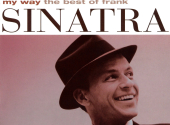
Story of a Hit #13: "Video Killed the Radio Star"
The Buggles 1979 hit has become a classic, so famous that it's more widely known than the band who created it. However, far from the one-hit-wonder as they are sometimes called, "Video Killed the Radio Star" showed off the band's brilliance, and the timelessness of this classic proves they knew what they were doing over 40 years ago.
Released as the single for their debut album The Age of Plastic, the single for "Video Killed the Radio Star" was an immediate success. In September 1979, it topped the charts in 16 different countries, including the UK, France, Spain, Japan and Australia (however, it only reached number 6 in the States, the following year).
Did video actually kill the radio star?
It's a new wave synth-pop classic, with layered synthesizers and iconic backing vocals, not to mention a message and sentiment that encapsulates the transformation of the music industry in the 80s.
On face value the song comes across as a nostalgic ode to the past and to the way people used to enjoy music – think of the opening lyric "I heard you on the wireless back in fifty-two". Of course, as you listen on, the humour in the song shows more and more, and it's arguably one of its most distinctive features. The video itself is hilarious, with costumes and sets that capture that humour and put the whole story into a weird futuristic setting, that juxtaposes against the lyrics wonderfully. Also, you can't miss a young Hans Zimmer, the prolific German film composer, miming keyboards around 2:50.
While the music industry transformed through the decades, the idea of a music video was already old in 1979. From Top of the Pops which began airing in 1964, to the Beatles movie "A Hard Days Night" and Queen's iconic video to "Bohemian Rhapsody" in 1975, the idea of a "Video Star" was hardly new. However, the introduction of MTV in 1981 decisively changed the way music was consumed, and it helped kick off so many artists in the decades that followed. And what video did MTV launch with at 12:01 am in 1981? None other than the Buggles' "Video Killed the Radio Star".
The original version
However, the Buggles version was not the first to hit the radio. Penned by Buggles members Trevor Horn and Geoff Downes, there was also a third contributor, Bruce Woolley, who recorded it only a few months earlier with his group The Camera Club.
This version didn't reach nearly the same level of fame as the Buggles'. Despite so many similarities between the versions, from the synth-pop sound to the backing vocals, it drives at a faster tempo and features more electric guitar – why is it that this version didn't make it to hit status?
Sometimes these questions are impossible to answer – was it better production, promotion, or simply better timing? Was it the video clip that shot the Buggles' version to fame, released on Top of the Pops in 1979, well before its debut on MTV?
Far from a one hit wonder
While some critics praised The Camera Club's version, I think today most people would argue that the Buggles captured the song perfectly. It's sophisticated in its own right, using various elements that stood out from other songs in the new wave era. The Buggles sometimes get called a one-hit wonder, but that wouldn't be fair to the myriad of great songs on their debut album The Age of Plastic, with the opening track "Plastic Age" getting particular appreciation.
The Buggles used effects like vocoders, exciting keyboard and synthesizer parts and vocal harmonies to great effect. The whole album is dynamic, featuring great chord progressions and so many sounds and influences – from the Beatles "Clean Clean", to rock opera "Kid Dynamo" and reggae "Island", all rolled into their iconic new wave and synth-pop sound. The album often gets credited for its significance and as a landmark at the "start of the era of electropop".
A hit that has stood the test of time
As "Video Killed the Radio Star" rocketed to fame, cover versions spread throughout the world, which I imagine only helped cement the fame the song was experiencing. Take this French version by Ringo "Qui Est Ce Grand Corbeau Noir" ("Who is This Big Black Raven"), which rewrote the lyrics almost completely, but otherwise didn't change much else.
It's one thing that the song had its heyday on release and totally another that its fame has lasted four decades. How can something so quintessentially '80s still speak to a completely different generation, brought up on hip-hop and clubbing?
Maybe it is precisely because the song is so '80s that it has survived in popularity through the years. Or maybe it's because the song is just so damn catchy, with all the right elements thrown together – what else could you expect from Trevor Horn, the "man who invented the eighties".
What do you think, is "Video Killed the Radio Star" the pinnacle of '80s synth-pop? What would you choose?
Leave us your opinion in the comments below!
If you have found an error or typo in the article, please let us know by e-mail info@insounder.org.





